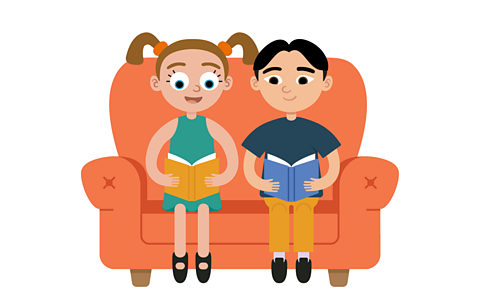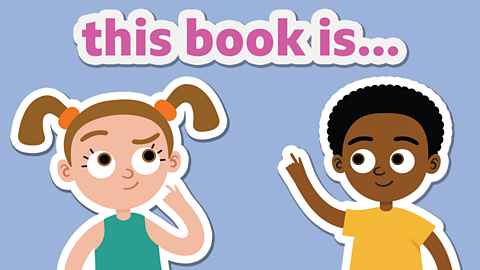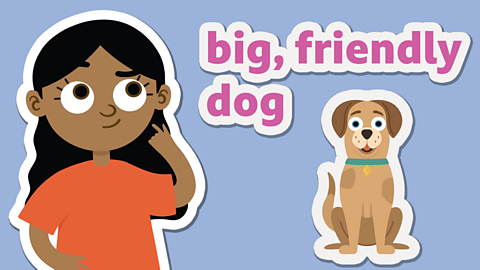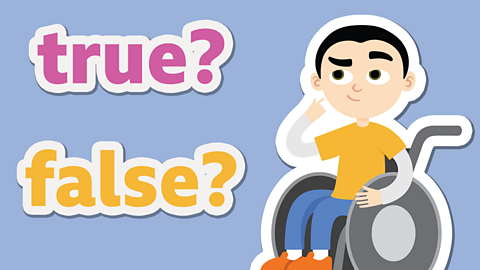What is comprehension?

When you read a text and show you understand it by answering questions, this is called comprehension.
You use comprehension skills all the time in everyday life. For example, when you work out what a sign means, watch a film or listen to a podcast.
You often need to link together facts and clues to properly comprehend (understand) whatÔÇÖs happening in a text.

Watch: Comprehension
Reading strategies
There are different strategies that you can use to help you understand a text and answer questions about it.
1. Actively read the text. Do not skim it. Read each word carefully and take in the whole text.
2. Use context to help you figure out what is happening in the text. A text will have different things happening in it depending on what type (or genre) of text it is.
For example:
A fairy tale might have dragons and giants but a story about a normal day at school wouldnÔÇÖt.
3. Summarise the facts ÔÇô what are the important parts of the text that the reader needs to know?
For example:
The characterÔÇÖs footsteps made the ground shake. His head is in the clouds.
4. Visualise in your head what is being said in the text. What can you see?
For example:
His head is in the clouds. You can picture a very tall man, because the clouds are really high up.
5. Ask questions to yourself about what you have just read.
For example:
Why is he making the ground shake? Could it be because he is so heavy?
6. Put all the clues together to get the bigger picture.
For example:
Both the facts from above put together tell the reader that the character is very tall.
How to answer comprehension questions

Here is a simple example of a comprehension question that you might find in an English lesson.
Tommy is wearing a grey jumper, round glasses and a blue hat.
Question: What colour hat is Tommy wearing?
If you can give the answer 'Tommy is wearing a blue hat', you have used your comprehension skills and shown you have understood the sentence correctly.
Comprehension becomes more challenging when the text is longer because you need to link together more facts and clues to understand whatÔÇÖs happening.
You have to be an active reader. This means you need to be thinking about what you are reading, as you are reading it.

Activity 1
You will be asked comprehension questions when you study texts to check how well youÔÇÖve understood them.
Retrieval questions are questions where the answers are given as facts within the text. The text tells you the answer.
Read the character description of a school caretaker called Mr Simmons. Then answer the retrieval questions in the quiz below the text.
You can go back and read the passage as many times as you like to find the answers.
Mr Simmons character description
Mr Simmons was the caretaker of Dillon Road Primary School. He was small, had white grey hair, round spectacles and always wore the same white overalls. He had been there for as long as anybody could remember.
He could often be found with his old yellow bucket and mop cleaning the corridors. Children would run in from play time, leaving shoe marks and muddy footprints and Mr Simmons would tut, roll his eyes and clean up the mess. Although he was always hard at work, and never really spoke to anyone, he loved his job.
At the end of the day, once everyone went home, he would clean classrooms and leave happy messages on the whiteboards for children and teachers to find in the morning. If ever he found a missing jumper, a lost toy or hidden sweets (which were not allowed) he would always find who they belonged to (and wouldnÔÇÖt tell you off). If ever he saw anyone who was sad or upset, he would pull funny faces through windows or round doorways in order to make them smile.
Activity 2
Watch the video of The Prince Who Thinks He Is A Rooster.
It is a story from Israel that teaches us a lesson about being an individual and making your own decisions.
YouÔÇÖll be answering five questions about this video after youÔÇÖve watched it. Read the questions now so you know what to look out for.
Watch this animated tale exploring the importance of individuality.
Answer the following questions in full sentences to show how well you have comprehended (understood) the story.
1. Why were the king and queen worried about the prince?
2. What three things did the king and queen try to do to change the princeÔÇÖs behaviour?
3. How many days did it take for the prince to start wearing clothes?
4. Why did the prince start eating ÔÇśpeopleÔÇÖs foodÔÇÖ?
5. How did the wise man convince the prince to sit at the table?
You can go back to the video and re-watch parts if you need to.
Activity 3

Read the following text carefully and answer the questions about it in full sentences, on paper.
It was a gloriously sunny day outside and Jenny wanted to make the most of it. She opened the cupboard door in the hallway and got out a collar and leash.
Within seconds, Flash came running in as quick as lightning. He jumped up and down on the spot, barking with excitement. Jenny placed the collar around his neck and attached the lead. She put on her cap and sun glasses and said ÔÇťCome on then, letÔÇÖs go!ÔÇŁ whilst opening the front door.
They stepped out into the beating sunshine, both smiling happily. They were about to go on an adventure.

1. What was the weather like?
2. What did Jenny get out of the cupboard?
3. Who came running to her?
4. What is Flash? How do you know?
5. How was Flash feeling about going for a walk? Explain your answer.
6. Why did Jenny put her sun glasses and cap on?
7. Was Jenny looking forward to the walk? How do you know?
Check how many answers you got right by looking at this
Play our fun English game Crystal Explorers. gamePlay our fun English game Crystal Explorers
Use grammar, punctuation and spelling skills to explore jungles, caves and tombs on your mission!

More on Comprehension
Find out more by working through a topic
- count4 of 4

- count1 of 4

- count2 of 4
